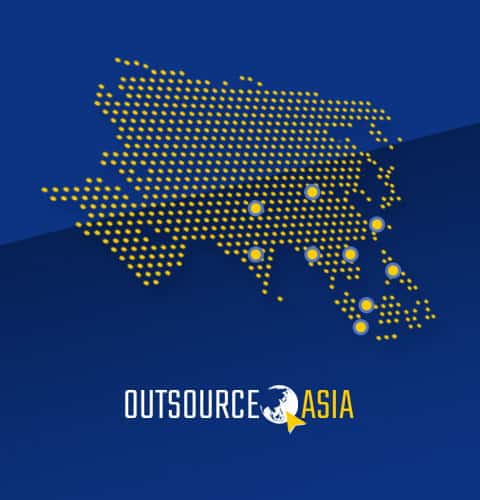The global business landscape is in constant flux, yet one trend remains remarkably resilient: Asia’s dominance as the world’s premier outsourcing destination. For decades, nations across the continent, from India and the Philippines to Vietnam and Malaysia, have been synonymous with business process outsourcing (BPO), IT services, and manufacturing support. But in an era defined by digital disruption, AI ascendancy, and shifting geopolitical tides, how do these hubs continue to not just survive, but thrive?
The answer is far more nuanced than the outdated notion of mere cost savings. While competitive pricing remains a factor, the enduring success of Asian outsourcing hubs hinges on a dynamic blend of strategic adaptation, relentless talent cultivation, technological prowess, and supportive ecosystems. They aren’t just following the playbook; they’re actively rewriting it. Let’s dissect the core strategies keeping Asia at the forefront of the global outsourcing game.
1. Beyond Cost: Cultivating Deep Talent Pools & Specialized Expertise
Yes, cost efficiency initially put Asia on the outsourcing map. Accessing skilled labor at lower rates than in Western markets provides undeniable value (Source 1.1, 6.1). However, relying solely on cost is a race to the bottom. Leading Asian hubs recognized this early, shifting focus towards building deep, highly skilled, and increasingly specialized talent pools.
- Education & Upskilling: Countries like India continue to produce vast numbers of engineers and IT graduates, solidifying their position in tech services (Source 4.2, 6.2). The Philippines leverages its high English proficiency and cultural affinity with the West to excel in customer service, BPO, and increasingly, digital marketing and back-office support (Source 1.1, 6.2). Governments and private sectors collaborate on training programs, often mandated by law as seen in the Philippines, to equip the workforce with in-demand skills like AI, data analytics, virtual assistance, and SEO (Source 2.2, 4.1).
- Niche Specialization: Hubs cultivate specific strengths. India dominates IT and software development. The Philippines leads in voice-based BPO and customer experience. Vietnam is rapidly emerging as a powerhouse in software development, AI, and even complex manufacturing, challenging established players with high-quality output and competitive rates (Source 3.1, 6.1). Malaysia attracts finance, accounting, and multilingual support services (Source 1.1, 4.1, 6.3). This specialization allows businesses to tap into concentrated expertise.
The narrative has evolved from “cheaper labor” to “accessing specialized, high-quality talent at scale.” Continuous investment in upskilling ensures the workforce remains relevant amidst technological shifts, turning potential threats like AI into opportunities for higher-value work (Source 2.2, 2.3).
2. Embracing the Tech Frontier: AI, Automation, and Digital Infrastructure
Complacency is the enemy of competitiveness. Asian outsourcing providers are aggressively integrating cutting-edge technologies like Artificial Intelligence (AI), Robotic Process Automation (RPA), and cloud computing into their service offerings (Source 1.1, 2.1, 5.1). This isn’t just about internal efficiency; it’s about delivering enhanced value to clients.
- Efficiency & Accuracy: RPA automates repetitive, rule-based tasks (data entry, basic report generation), freeing human agents for complex problem-solving, critical thinking, and empathetic customer interaction (Source 5.1). AI-powered tools enhance data processing speed and accuracy, streamline customer interactions through intelligent chatbots and voice recognition, and provide predictive analytics (Source 5.1, 2.2).
- New Service Lines: Technological adoption enables providers to offer sophisticated services like advanced data analytics, AI model training, cybersecurity management, and complex software development, moving far beyond traditional call centers or back-office support (Source 1.1, 5.1).
- Robust Infrastructure: Governments and providers invest heavily in high-speed internet, reliable power grids, and modern IT infrastructure, ensuring seamless connectivity and operational stability – critical factors for global clients (Source 1.2, 4.1, 6.2).
Rather than viewing AI as a replacement for human workers, leading hubs see it as augmentation – a tool to enhance capabilities, improve service quality, and unlock new avenues for growth (Source 2.2, 5.2). Providers capable of implementing and advising on AI governance, data security, and ethical usage are gaining a significant competitive advantage (Source 2.1).
3. The Power of Partnership: Government Support and Favorable Ecosystems
The success of Asian outsourcing isn’t accidental; it’s often nurtured by deliberate government strategy and supportive business environments.
- Incentives & Policy: Many Asian governments actively court outsourcing investments through tax holidays, special economic zones (like the Philippines’ PEZA), streamlined regulations, and financial incentives (Source 1.2, 4.2, 4.3, 6.3). This significantly reduces the cost and complexity of setting up and operating.
- Infrastructure Investment: Government spending on digital and physical infrastructure creates a conducive environment for outsourcing operations (Source 6.1, 4.2).
- Stability & Ease of Doing Business: Countries like Singapore and Malaysia are noted for their political stability and ease of doing business, attracting higher-value, knowledge-based outsourcing (Source 1.1, 4.1). While regulatory landscapes can be complex, proactive government support helps navigate these challenges (Source 1.2).
This governmental backing creates a synergistic ecosystem where businesses can thrive, assured of stability, support, and access to necessary resources.
4. Flexibility and Scalability: Meeting Dynamic Business Needs
The ability to adapt quickly is paramount in today’s volatile market. Asian outsourcing partners excel at providing scalability and flexibility, allowing businesses to ramp operations up or down in response to demand fluctuations without the burden of fixed overheads (Source 1.1, 8.1). Whether a startup needs a small support team or a multinational requires a large-scale deployment for a seasonal peak, Asian providers offer adaptable models, including access to the gig economy for project-specific needs (Source 2.3). This agility is a crucial competitive differentiator.
5. Strategic Imperatives: Quality, Security, and Customer Experience
The conversation has shifted decisively towards value. Leading providers compete not just on price but on:
- Quality Assurance: Implementing rigorous quality control processes and adhering to international standards (like ISO certifications or HIPAA compliance for healthcare BPO) builds trust (Source 4.1). Vietnam, for instance, is gaining ground by emphasizing high-quality, reliable work with strong IP protection (Source 3.1).
- Cybersecurity: In an era of heightened digital threats, robust data security is non-negotiable. Providers are investing heavily in end-to-end encryption, multi-factor authentication, and compliance with global data protection regulations (GDPR, etc.) to safeguard sensitive client information (Source 2.1, 2.3).
- Enhanced Customer Experience (CX): Moving beyond basic customer service, providers leverage technology and skilled agents to deliver personalized, proactive, and omnichannel support, directly impacting client brand loyalty and satisfaction (Source 8.2, 5.1).
Looking Ahead: The Agile, Integrated Future
Asia’s outsourcing hubs are not resting on their laurels. They understand that sustained competitiveness requires continuous evolution. The focus is shifting towards:
- Higher-Value Services: Moving up the value chain into Knowledge Process Outsourcing (KPO), R&D, complex analytics, and strategic consulting.
- Integration: Seamlessly integrating AI and automation with human expertise to deliver hybrid solutions.
- Sustainability: Increasingly, clients prioritize partners committed to environmental responsibility and sustainable practices (Source 2.1, 2.3).
- Resilience: Building operational resilience to navigate geopolitical uncertainties and supply chain disruptions, sometimes through nearshoring or diversifying locations within Asia.
The key takeaway? Asian outsourcing hubs remain competitive by being remarkably adaptable. They leverage their foundational strengths – cost-effectiveness and talent – while strategically investing in technology, specialization, infrastructure, and quality. They understand the changing demands of global business and are proactively shaping their offerings to meet them. For companies seeking efficiency, expertise, scalability, and increasingly, innovation, Asia continues to offer a compelling, multifaceted value proposition that extends far beyond the bottom line.
Ready to leverage Asia’s outsourcing potential?
Contact Outsource Asia today to discover how we can help your business thrive with customized, AI-driven outsourcing solutions.



